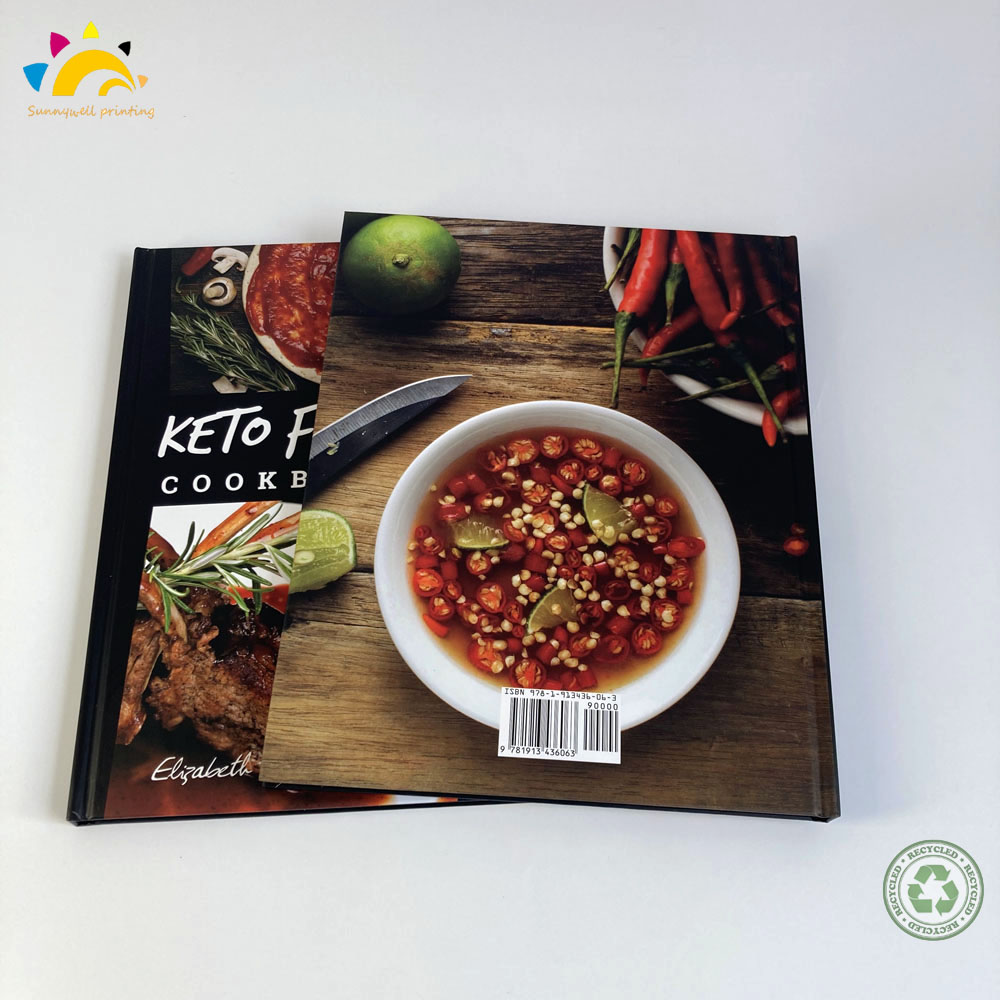Cookbook Recipe Printing: The Art of Preserving Culinary Creativity
2025-05-12
Creating a cookbook is more than just compiling recipes; it’s about capturing the essence of culinary traditions, techniques, and flavors in a format that can be enjoyed by others for years to come. Whether you’re a professional chef, a food blogger, or a home cook, printing your own cookbook can be a rewarding experience. In this article, we will explore the process, benefits, and key considerations involved in cookbook recipe printing.

What is Cookbook Recipe Printing?
Cookbook recipe printing refers to the process of taking a collection of recipes, often combined with personal anecdotes, photography, and tips, and turning them into a professionally printed book. This process typically involves compiling a series of recipes into a cohesive format, designing the layout, printing the pages, and binding the book into a finished product.
This can be done for a variety of purposes: from personal use (such as making a family recipe book) to professional endeavors (like publishing a cookbook for sale). Regardless of the end goal, cookbook printing is an art that requires careful planning and attention to detail to create a book that is both functional and aesthetically pleasing.
The Process of Cookbook Recipe Printing
1. Recipe Selection and Organization
The first step in creating a cookbook is selecting the recipes to include. Depending on the focus of the cookbook (e.g., desserts, vegetarian dishes, family recipes), you may have a clear direction on what to include. It’s important to ensure the recipes are organized logically, whether by course (e.g., appetizers, mains, desserts) or by ingredient type (e.g., seafood, poultry, vegetables).
2. Recipe Testing
Once the recipes are chosen, testing is key. This ensures that the recipes are accurate and produce the desired result. This step is essential for a professional cookbook, as consistency and reliability are crucial. Testing recipes allows you to make adjustments and perfect them before including them in the final print.
3. Design and Layout
The design of the cookbook is vital in creating an engaging and visually appealing product. This includes selecting fonts, colors, and the overall layout for each page. Many cookbooks include high-quality photographs of the dishes, as visuals play a big part in enticing readers. You’ll need to decide how much space each recipe will take, how to present the ingredients and instructions, and how to incorporate additional features like tips or notes.
When it comes to layout, the spacing and formatting should be user-friendly so that the cookbook can easily be used while cooking. For example, keeping ingredient lists on one side of the page and instructions on the other can make the recipe easier to follow.
4. Photography and Visual Content
For many, food photography is one of the most exciting aspects of cookbook creation. Professional-quality photos can elevate the appeal of a cookbook, making it visually stunning and more enticing to readers. High-resolution images showcasing finished dishes are commonly used throughout cookbooks to inspire and educate readers. Additionally, step-by-step photos can be helpful for more complex recipes.
5. Choosing a Printing Method
Once the content is finalized, the next step is choosing how to print the cookbook. There are two main options: offset printing and digital printing.
Offset Printing: This method is best suited for large print runs, as it offers high-quality results at a lower cost per unit. However, it requires significant upfront costs for setting up the printing press.
Digital Printing: Digital printing is ideal for smaller print runs or print-on-demand projects. It’s more cost-effective for smaller quantities and offers quicker turnaround times. Many self-publishing authors or small publishers opt for this method.
6. Binding and Finishing
The final step is binding the printed pages into a finished book. There are different binding options, including:
Spiral Binding: This allows the cookbook to lie flat while open, which is very practical when cooking.
Perfect Binding: This is the most common method for professional cookbooks, where the pages are glued together along the spine, resulting in a more traditional book appearance.
Hardcover Binding: This provides a premium look and feel, often used for high-end or gift cookbooks.
Additionally, special finishes like matte or glossy coating on the cover can enhance the visual appeal and durability of the book.
Benefits of Cookbook Recipe Printing
1. Preservation of Recipes
Printing a cookbook allows you to preserve cherished family recipes, local culinary traditions, or personal creations for future generations. It serves as a tangible legacy that can be passed down, shared, and enjoyed.
2. A Personal Touch
A printed cookbook can include personal anecdotes, cooking tips, and unique photography, making it a personal project that reflects your culinary style and philosophy. It’s a great way to connect with friends, family, and readers on a deeper level.
3. Professional Publishing Opportunities
For chefs, food bloggers, and culinary professionals, cookbook printing is an opportunity to publish a professional product that can be sold or distributed to a wider audience. A well-crafted cookbook can elevate your brand and reputation in the food industry.
4. Gift and Keepsake Potential
Cookbooks are often treasured gifts for special occasions such as weddings, holidays, or birthdays. A beautifully designed cookbook filled with unique recipes and personal touches makes for a thoughtful, meaningful gift that will be used for years to come.
5. Marketing and Branding
For culinary businesses or food influencers, printing a cookbook serves as a powerful marketing tool. It can help establish your brand, showcase your expertise, and create new business opportunities. Many chefs use cookbooks as a way to expand their reach, whether through book sales, collaborations, or events.
Key Considerations for Cookbook Recipe Printing
1. Budget
Printing a cookbook involves costs for design, photography, printing, and binding. It’s important to set a realistic budget based on the number of copies you intend to print and the quality of materials you choose. Print-on-demand services are a great option for small budgets, while offset printing can be more cost-effective for larger runs.
2. Target Audience
Think about who will be reading and using your cookbook. Are you aiming for casual home cooks, professional chefs, or a niche group of food enthusiasts? Tailoring the design, tone, and content of the cookbook to your target audience will increase its appeal.
3. Distribution and Sales
If you plan to sell your cookbook, you will need to consider distribution channels, pricing, and marketing strategies. You may sell it through online retailers, local bookstores, or at food events. Creating a compelling marketing campaign will help your cookbook gain exposure and attract buyers.
Conclusion
Cookbook recipe printing is a rewarding and creative way to share your culinary expertise, preserve treasured recipes, or expand your professional brand. Whether you’re compiling family recipes or launching a commercial project, a printed cookbook allows you to present your work in a beautifully crafted format that will be enjoyed for years. With careful planning, attention to design, and high-quality printing, your cookbook can become both a functional tool in the kitchen and a cherished keepsake.


